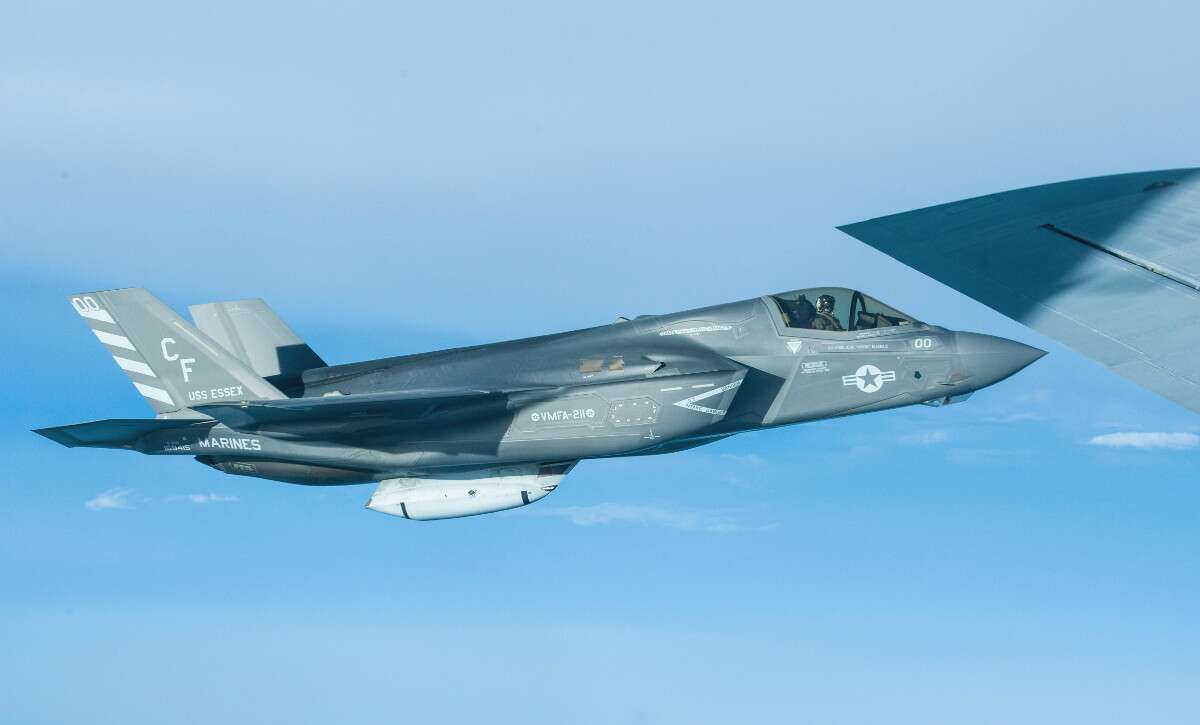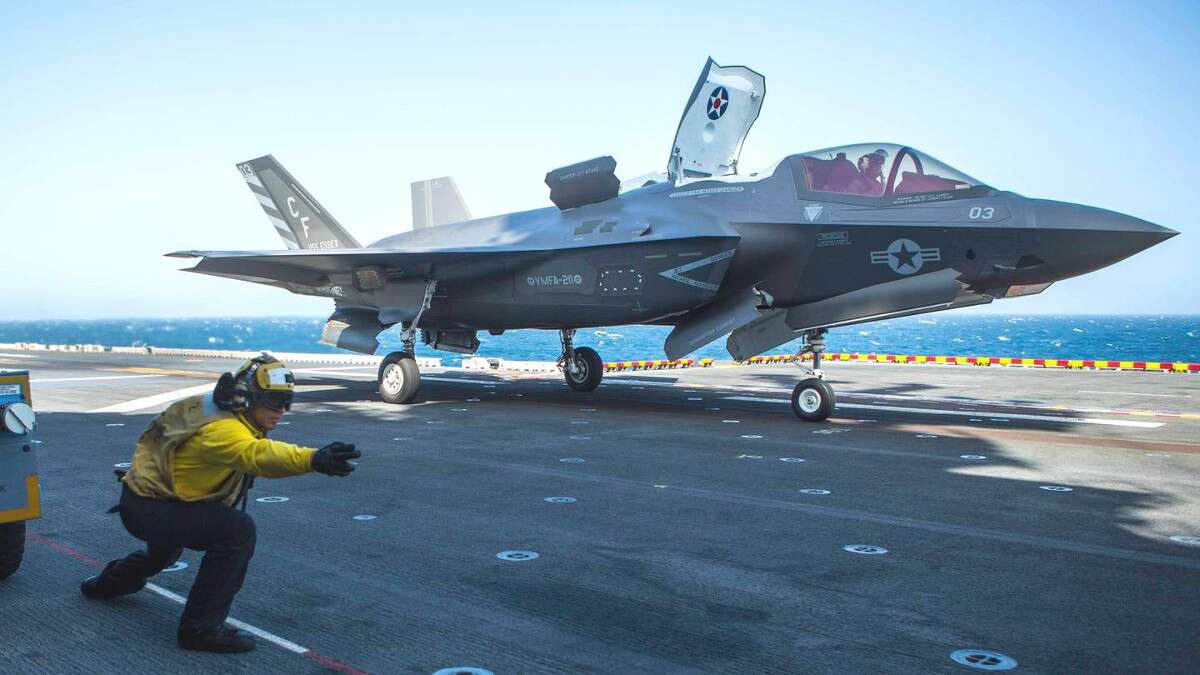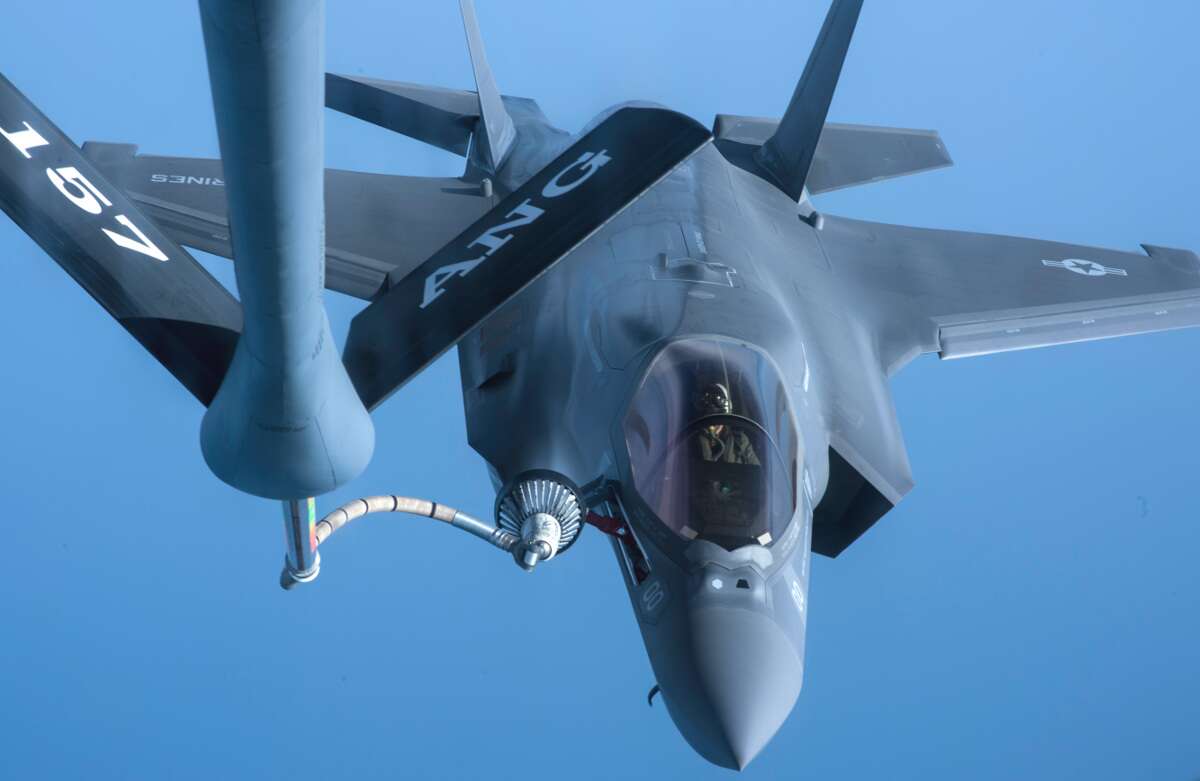U.S. Marine Corps F-35B Joint Strike Fighters have reportedly conducted reconnaissance missions over or near Somalia and were ready to respond to requests for close air support from American forces in that country during their first-ever deployment to the Horn of Africa region aboard the USS Essex amphibious assault ship. There are now reports that U.S. military could employ these same aircraft to conduct strikes in Afghanistan, flying all the way from the Persian Gulf.
CNN first reported the activities of the F-35Bs, citing unnamed sources, which could be the first missions in support of active combat operations for American Joint Strike Fighters, as well as the potential for their first-ever actual strikes, on Sept. 25, 2018. The six jets from Marine Fighter Attack Squadron Two One One (VMFA-211) arrived off the cost of the Horn of Africa earlier in the month where they were due to conduct a routine training exercise. The jets are attached to the 13th Marine Expeditionary Unit (MEU), which is presently embarked on the ships of the Essex Amphibious Ready Group (ARG), which includes the Wasp-class amphibious assault ship USS Essex, the San Antonio-class amphibious transport dock USS Anchorage, and the Whidbey Island-classamphibious dock landing ship USS Rushmore.
The F-35Bs took to the skies around Somalia to perform surveillance missions and to stand guard in case there was a need to respond to requests for support from U.S. forces in the country or their African Union and Somali partners, according to CNN. On Sept. 21, 2018, unspecified U.S. military aircraft, typically understood to be armed drones, conducted a so-called “self-defense” strike on Al Qaeda-linked Al Shabaab militants who had attacked a combined patrol of U.S. and local forces. A similar mission occurred on Sept. 11, 2018.
CNN says that the F-35Bs did not take part in the Sept. 21 mission and there is no indication that they participated in the one on Sept. 11. It is not clear what portion or portions of Somalia the jets have been monitoring, either.

In March 2017, President Donald Trump’s administration did designate a wide swath of southern Somalia, where Al Shabaab is particularly active, as an area of active hostilities. This gave U.S. forces there greater leeway to call in air strikes and other support, as necessary. Since then, American operations in Somalia have steadily, if quietly increased in size and scope.
In May 2017, a U.S. Navy SEAL died in a controversial raid near the town of Barii. Another operation in the same area in August 2017 led to reports of a full-blow massacre of innocent civilians. After initially denying the accusations, U.S. Africa Command (AFRICOM) initiated a second investigationinto the latter incident. A third incident in May 2018 prompted yet another investigation. AFRICOM has not made any results of these reviews public.
At the same time, as they have stepped up their operational tempo, U.S. forces working together with African Union and Somali personnel have increasingly come under attack. In June 2018, U.S. Air Force HH-60G Pave Hawk rescue helicopters and a C-130J airlifter worked together to help wounded American personnel evacuate to safety after an Al Shabaab attack on a combined force working to establish a new forward operating base.
Armed air support is typically on standby during these types of large, multi-day operations. This could have been the missions VMFA-211’s F-35s found them tasked with while operating in the area and would explain pictures the U.S. military released showing the jets carrying a detachable gun pod under their fuselage that is typically reserved for close air support missions in lower threat environments since it reduces their aircraft’s stealthy characteristics.
Of course, there would have been little need for the Joint Strike Fighter’s stealth features during any missions over Somalia, since Al Shabaab forces have limited access to advanced anti-aircraft weapons. They have acquired capable short-range, man-portable shoulder-fired surface-to-air missiles in the past, though.

The F-35’s primary advantage, in this case, would have been its ability to respond quickly and act flexibly given its ability to fly patrols in close proximity to potential target areas thanks to the mobile nature of the Essex Amphibious Ready Group. This is exactly the sort of crisis response mission MEUs excel atand train to conduct on a regular basis.
Those capabilities are less likely to show in any future strike in Afghanistan, which CNN‘s sources said could be coming soon now that Essex and her entourage have moved into the Persian Gulf. Though the Afghan theater of operations is equally low-risk, VMFA-211’s F-35s will face a far more arduous task of getting there in the first place.
The jets are unable to carry range-extending external fuel tanks and are heavily reliant on aerial refueling tankers to make up for their limited range. As such, U.S. Air Force tankers will have to accompany them back out of the Persian Gulf into the Gulf of Oman and then into the Indian Ocean, before the aircraft turn and fly across Pakistan on their way to Afghanistan. A direct route from the Persian Gulf to Afghanistan is impossible as it would require flying over Iran.

One of VMFA-211’s F-35Bs takes off from Essex earlier in September 2018.
There could be a risk that Pakistan air defenders might take the opportunity to observe the sensitive radar signature of the jets during this transit, but this is unlikely. It almost certain that the jets would be carrying radar reflectors that they use on non-combat missions given the entirely permissive air combat environment in Afghanistan.
U.S. commanders may decide to deploy the aircraft to a base in Afghanistan proper, even just briefly in order to allow them to refuel. A likely basing option would be Kandahar Air Base in southern Afghanistan, which is close to where Marine Corps forces are operating in the country.
It is possible that the jets could remain in the country for multiple days in order to maximize the value of the operation, as well. This could present other challenges, however, as the Marines recently revealed that the Joint Strike Fighters require specialized protection against lightning strikes while they sit on exposed the tarmac.

One of VMFA-211’s F-35Bs receives fuel from a US Air Force KC-135 tanker while flying in the Horn of Africa Region.
Regardless, either option is an immense amount of effort for what would almost certainly be token strikes against Taliban or other militants in Afghanistan. The U.S. military has faced criticism, even from within its own senior leadership, about the recent use of F-22 Raptor stealth fighters to conduct strikes against drug labs in the country.
However, there could be immense training value in going through the motions of a real combat mission for the first time. It would also present an opportunity to test out rapid deployment methods in truly austere environments under combat conditions using the advanced jets, but with minimal risks.
The Somalia missions already show that the U.S. military is taking steps to further integrate the F-35 in more routine missions, no matter how mundane they might be, just like any other combat jet. The Marines are no doubt eager to show off the still highly controversial Joint Strike Fighter’s capabilities in actual combat, no matter how limited, especially since the Israelis have already claimed the title of the first air arm to send the planes into action ever.
All told, it wouldn’t be surprising to hear that VMFA-211 had flown the first-ever U.S. combat missions with the F-35 in the coming days.
Contact the author: jtrevithickpr@gmail.com
Source: The Drive
![]()






























